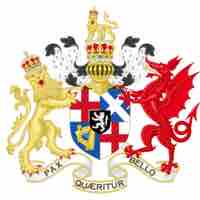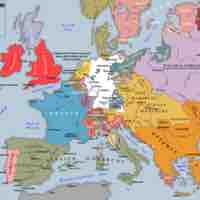Chapter 19
The Rise of Nation-States
By Boundless
Although the definition, origins, and early history of nation state are disputed, nation state remains one of the central categories of the modern world.
Although the Peace of Westphalia did not end wars in Europe, it established the precedent of peace reached by diplomatic congress and a new system of political order in Europe based upon the concept of co-existing sovereign states.
The Reconquista is a period in the history of the Iberian Peninsula dominated by almost constant warfare between Muslims and Christians and followed by the Spanish Inquisition.
Under the rule of the Habsburg dynasty, Spain became the first modern global empire and the most influential state in Europe only to be reduced to a second-rank power by the time the last Spanish Habsburg died in 1700.
Extreme commitment to champion Catholicism against both Protestantism and Islam shaped both domestic and foreign policies of Philip II, who was the most powerful European monarch in an era of religious conflict.
The Spanish Golden Age (Spanish: Siglo de Oro) is a period of flourishing in arts and literature in Spain, coinciding with the political rise and decline of the Spanish Habsburg dynasty.
The reign of Elizabeth I was marked by the restoration of the Protestant Church of England and competition with powerful Spain that both fueled a sense of modern English national identity.
Believing that their power is God-given right, James I and his son and successor, Charles I of England, reigned England in the atmosphere of repeated escalating conflicts with the English Parliament.
Charles I's attempt to impose taxes not authorized by Parliament contributed to the ongoing conflict between the King and Parliament and eventually resulted in passing the 1628 Petition of Right.
The escalating conflict between Charles I of England and the English Parliament resulted in the English Civil War, in the aftermath of which monarchy disappeared for over a decade and Oliver Cromwell ruled as Lord Protector of the Commonwealth of England, Scotland, and Ireland.

Despite the revolutionary nature of the government during the Protectorate, Cromwell's regime was marked by an aggressive foreign policy, no drastic reforms at home, and difficult relations with Parliament, which in the end made it increasingly similar to monarchy.
Over a decade after Charles I's 1649 execution and Charles II's 1651 escape to mainland Europe, the Stuarts were restored to the English throne by Royalists in the aftermath of the slow fall of the Protectorate.
The Glorious Revolution was the overthrow of King James II of England by a union of English Parliamentarians with the Dutch stadtholder William of Orange and his wife Mary that resulted in the eventual regulation of the respective powers of Parliament and the Crown in England.
Richelieu's successful policies leading to the consolidation of the royal power, centralization of the state, and strengthening the international position of France paved the way for the authoritarian rule of Louis XIV.
Cardinal Mazarin, for years de facto the ruler of France, continued earlier anti-Habsburg policies, was critical to establishing the Westphalian order of sovereign states, and laid the foundation for Louis XIV's absolutism.
Throughout his reign, Louis XIV, known as the Sun King, consolidated royal power and centralized the state by financial, administrative, and legal reforms as well as by a sophisticated system of controlling the French aristocracy.
The persecution of the Huguenots became one of the critical factors in Louis XIV's consolidation of royal power and resulted in Catholicism being the only legally tolerated religion in France, despite Louis' conflict with the Pope.
Louis XIV's expansionist ambitions resulted in numerous wars that positioned nearly all European powers against France and bankrupted the French state but turned France into the most powerful state in Europe.

The question of Spanish succession at the turn of the 18th century was linked directly to the question of balance on powers in Europe and led to a major European war that ended the European hegemony of France.
William III's main goals in the conflict over the Spanish succession was to ensure the Protestant accession in England and curb the power of France and Louis XIV.
The Treaty of Utrecht, which initiated the end of the War of the Spanish succession, strengthened the balance of power in Europe by securing two major goals: Louis XIV's acknowledgement of the Protestant succession in England and safeguards to ensure that the French and Spanish thrones remained separate.
The early years of Peter the Great were marked by power struggles among multiple heirs to the Russian tsardom as well as Peter's European travels that greatly inspired his modernizing reforms.
In order to modernize socially and economically lagging Russia, Peter the Great introduced sweeping social, administrative, and economic reforms that Westernized Russia to a certain extent yet did not alter deeply feudal divisions in the increasingly authoritarian state.
The foreign policy of Peter the Great focused on the goal of making Russia a maritime power and turned Russia into one of the most powerful states in Europe, shifting the European balance of power.

Through his expansive domestic reforms, Peter the Great modernized Russia but he also centralized power in his hand, significantly curbing the influence of the noble elites and the Orthodox Church.